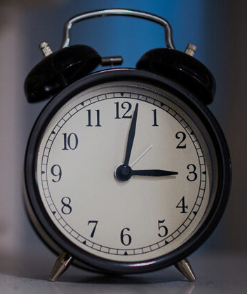Maintaining focus can sometimes be challenging, especially in today’s world filled with distractions. Whether you are studying, working, or simply trying to complete a task, your environment plays a significant role in how well you can concentrate. One fascinating and effective way to enhance focus is by using color psychology — the study of how colors affect human emotions and behaviors.
In this article, we will explore how different colors influence focus, concentration, and productivity, and provide practical advice on how you can use color to create an environment that supports your ability to stay on task.
Understanding Color Psychology
Color psychology is based on the idea that colors can evoke certain feelings and mental responses. This means that the colors around you can influence your mood, energy level, and even cognitive functions such as attention and memory.
While color responses can be subjective and vary between individuals and cultures, there are common patterns that many people experience. For example, some colors tend to calm the mind, while others can energize it.
Colors That Promote Focus
Blue: The Color of Calm and Clarity
Blue is known for its calming effect. It helps to lower heart rate and reduce feelings of anxiety, which can improve concentration and mental clarity. Many studies show that blue environments support productivity, especially for tasks that require critical thinking or problem-solving.
If you want to introduce blue into your environment, consider painting a wall a soft blue shade or incorporating blue office supplies such as folders or planners. Even wearing blue clothing during study or work sessions can subtly help maintain a calm and focused mindset.
Green: Refreshing and Restorative
Green is the color most associated with nature. It represents balance, renewal, and tranquility. Green is gentle on the eyes and helps reduce eye fatigue, which is beneficial during long periods of reading or screen time.
Adding plants to your workspace or using green desk accessories can bring this restful energy into your study area. A green wall, poster, or even a desktop wallpaper with natural scenes can also be effective.
Yellow: Bright and Motivating
Yellow is often linked with happiness, optimism, and creativity. It stimulates mental activity and encourages positive thinking, which can help you stay motivated and energized.
Because yellow is a bright and attention-grabbing color, it’s best used as an accent in your workspace—such as in desk organizers, notebooks, or wall art—to provide a cheerful boost without overwhelming your senses.
Colors to Use Sparingly or Avoid for Deep Focus
Red: Intense and Alert
Red is a powerful color that increases energy and alertness. While it can be helpful in short bursts or for tasks requiring physical activity or quick decisions, too much red may cause feelings of stress or distraction. If you choose to use red, do so in small doses, such as a red pen or a small red decoration.
Orange and Purple: Creative and Energetic
Orange encourages enthusiasm and social interaction, while purple inspires creativity and imagination. Both are excellent choices for creative environments but may not be ideal if your goal is sustained, deep focus.
Practical Ways to Use Color Psychology to Stay Focused
Create a Colorful Study or Work Space
Consider how you can incorporate focus-enhancing colors into your physical space. Painting walls or choosing furniture in calming colors like blue or green can set a productive tone. If painting is not an option, use colored accessories, such as cushions, lampshades, or curtains.
Use Color in Your Tools and Materials
Your notebooks, planners, and writing tools can be more than just practical items—they can also support your focus. Choosing blue or green notebooks or highlighters can reinforce calmness and clarity as you work.
Digital Environment Matters Too
Customize your computer or phone backgrounds with calming color palettes. There are many apps and websites that offer color themes designed to reduce eye strain and improve focus.
Wear Colors That Help You Concentrate
Clothing color can subtly influence your mood. Wearing shades of blue or green during important work or study sessions might help you feel more composed and attentive.
Additional Tips for Using Color Effectively
Balance Your Colors: Combine colors to balance energy and calmness. For example, pair blue or green with soft yellows.
Personal Preference Counts: Everyone responds differently to colors, so pay attention to how certain colors make you feel and adjust your environment accordingly.
Change Things Up: Avoid monotony by periodically changing the colors in your workspace. This can refresh your mindset and maintain motivation.
Use Natural Elements: Plants or natural materials can bring in soothing green tones and add to a focus-friendly atmosphere.
Conclusion
Color psychology offers a natural and accessible way to enhance your focus and productivity. By understanding how different colors affect your mind and mood, you can create an environment tailored to support your best work. Whether it’s through wall colors, accessories, or even your clothing, small changes can make a big difference in how well you concentrate.
Try experimenting with colors and observe how they impact your ability to stay focused. Over time, you will discover the perfect combination that helps you stay motivated and productive throughout your day.






